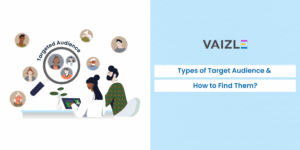OpenAI reveals how people use ChatGPT
OpenAI’s new study shows how people use ChatGPT day to day. See the main patterns, surprises, and where the real value shows up.
As an avid ChatGPT user myself, I keep looking for data and signals to understand its massive adoption. That’s because when a tool of this scale becomes a part of your daily life, data stops being trivia and starts being a map.
OpenAI’s latest post and report finally gives that clarity. Also, National Bureau of Economic Research released a very dense report of 64 pages highlighting every data pointer explaining how people are using ChatGPT.
Let’s explore some major pointers.
TL;DR
- ChatGPT use is mainstream: ~700M weekly users and ~18B weekly messages.
- Non-work is now the majority on consumer plans and keeps growing.
- Three patterns cover most chats: practical guidance, seeking information, and writing; writing leads at work.
- People ask first and act next: Asking > Doing > Expressing.
- Coding is a small slice (~4.2%); companionship and role-play are rare.
- The audience has broadened toward parity and is growing faster in low- and middle-income countries.
The first big picture of real ChatGPT use
OpenAI has released the clearest look so far at everyday ChatGPT usage, paired with an NBER working paper led by its Economic Research team and Harvard economist David Deming. The best part here is how the team created an automated, privacy-preserving pipeline where no human read the 1.5 million consumer conversations.
One of the top data pointer is how vast ChatGPT usage is & how this level of scale is unusual for consumer technology. By July 2025, ChatGPT counted roughly 700 million weekly active users who sent about 18 billion messages each week, which works out to more than two billion messages a day.
One shift frames the rest of the story. Consumer chats today are mostly non-work, at about 70 percent, up from roughly 53 percent a year earlier. Work use has grown as well, yet non-work has grown faster, which suggests that a large share of the value now shows up in everyday personal tasks alongside professional ones.
How people actually use ChatGPT?
When it comes to ChatGPT uses, most conversations are falling into three plain buckets that cover almost everything people do in chat.
- Practical guidance: plan a study schedule, shape a workout plan, outline next steps for a project.
- Seeking information: ask for a concise explanation or a product comparison and get an answer, not a page of links.
- Writing: draft or improve emails, documents, summaries, or translations; this is the most common work task.
In work conversations, writing accounts for about forty percent of messages, and roughly two thirds of those are requests to edit or improve text the user already wrote rather than to start from a blank page.
Tutoring and teaching make up about ten percent of all messages, which signals steady demand for explanations and step-by-step help.
The report also notes that information-seeking looks like a close substitute for web search, which is why people reach for ChatGPT when they need a quick, direct answer.
Surprising data pointers in the ChatGPT report
Honestly, I was expecting coding to be on the top use cases of ChatGPT. But with only 4.2% of conversations related to programming, it is still a very small slice.
Writing, on the other hand, is a completely different ball game. About two thirds of writing requests ask for edits, critiques, or translations rather than a draft from scratch.
Companionship is smaller than public chatter suggests. Messages about relationships and personal reflection account for ~1.9%, and games or role-play account for ~0.4%. That pattern reinforces the idea that people reach for chat when they want help getting something done, not a stand-in for a friend.
How people interact also tells a story. About 49% of messages are Asking, 40% are Doing, and 11% are Expressing. Asking has grown faster and earns higher satisfaction, which fits a simple idea: the assistant works best as an advisor that helps you decide, then helps you act.
What type of audience is using ChatGPT today?
Adoption looks broader and more balanced than it did at launch. In early months, active users skewed heavily male. By July 2025, the share of users with typically feminine first names rose to ~52%, and the share with typically masculine names fell to ~48%.
Gender breakdown of people using ChatGPT
- Early adoption leaned heavily male.
- By mid-2025, the split had flipped toward parity, with feminine-name users crossing the halfway mark. This points to a user base that now resembles the general adult population rather than a niche tech crowd.
Age breakdown of people using ChatGPT
- Younger adults remain heavy users, with nearly half of adult messages coming from people under 26.
- Older groups are catching up as usage becomes part of routine tasks, not just early experimentation.
Where ChatGPT user growth is coming from?
- Adoption is spreading fastest in low- and middle-income countries.
- By May 2025, growth rates in the lowest-income countries were over four times those in the highest-income countries, which shifts where value shows up first. OpenAI
Education and occupation of most ChatGPT users
- People with higher education and those in professional, higher-paid roles are much more likely to use ChatGPT for work.
- In these groups, the assistant shows up as support for information gathering, decision making, and writing polish rather than as a full task replacement. NBER
Work vs non-work mix
- Consumer usage today is mostly non-work, while work usage keeps rising in parallel.
- That mix suggests the tool now delivers value in everyday life as well as on the job, and it helps explain why writing and guidance feel so central to common use.
Get the latest marketing news and trends
Delivered straight to your inbox.
Thank you for subscribing!
Stay tuned for the latest updates.
For a long time, Meta advertisers have noticed something strange. Conversions were...
One marketer ran a simple test. And what happened next might change...
The race to dominate AI has mostly focused on models, chips, and...
For years, Indian performance marketers have had to guess their way into...


![Good Password Ideas Without Copying Examples [2025]](https://insights.vaizle.com/wp-content/uploads/2025/09/password-ideas-banner-300x150.jpg)

